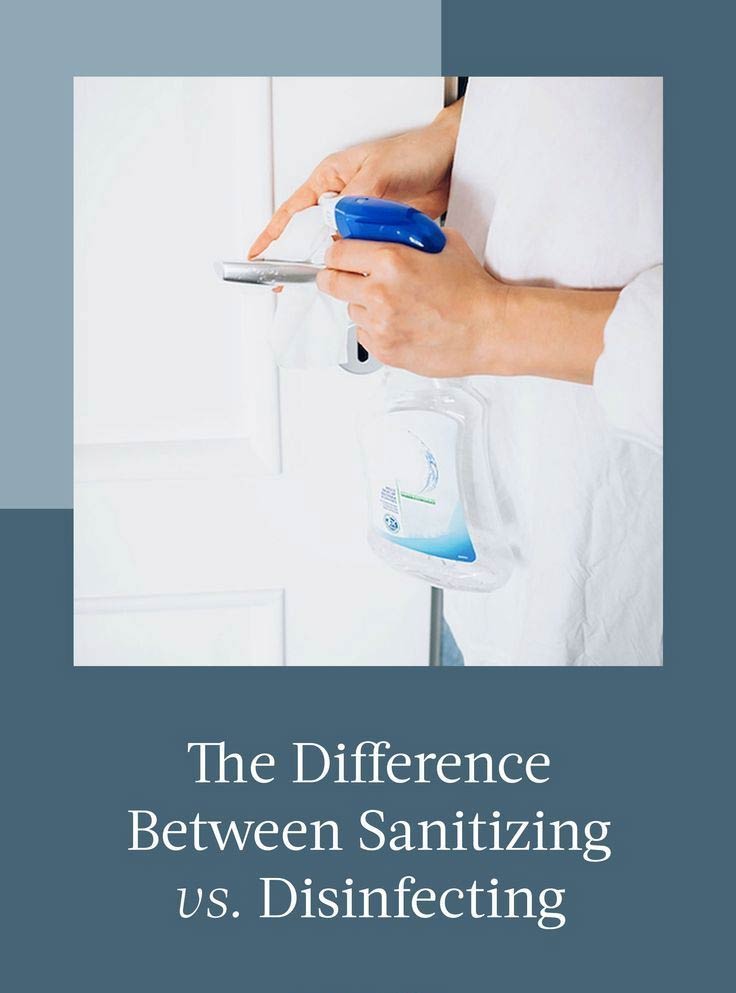
Please choose a body region on the right for you to pin point the problem area of your body.

Shop by Condition

Shop by Brand
Oftentimes, we use the words disinfectant and sanitizer interchangeably. The two words hold distinct meanings and applications. As such, their interchangeable use results in confusion as well as misuse. To use them effectively, we must understand the difference between disinfectant vs. sanitizer.
This article discusses the key differences between the two and how these should affect how we use them.
Differences in How They Work
 One of the main differences between the two is what they do. While disinfecting kills almost all germs on a surface, sanitizing reduces the number of germs to a level considered safe. A key reason for this distinction is the chemical components of the products and how they work.
One of the main differences between the two is what they do. While disinfecting kills almost all germs on a surface, sanitizing reduces the number of germs to a level considered safe. A key reason for this distinction is the chemical components of the products and how they work.
Disinfectants comprise hydrogen peroxide, chlorine, and various chlorine compounds, among other chemicals. When applied to a surface, these chemicals often destroy the cell walls of any microbes present. In some other cases, they might interfere with the metabolism of microorganisms.
On the other hand, most sanitizers consist of a high concentration of alcohol. Alcohol essentially breaks down the cell structure of microbes, thus rendering them inactive. The efficacy range of these products varies significantly based on the chemical structure. Though their efficacy levels are lower than those of disinfectants, reducing the number of germs minimizes infection risk.
Differences in Contact Time
A significant advantage of sanitizers over disinfectants is the speed at which they act. Typically, a sanitizer works almost instantaneously, while a disinfectant could take up to 10 minutes. Referred to as contact time or wet time, this duration varies from one disinfectant to another based on the chemical makeup.
To ensure efficacy, you must follow the instructions for use meticulously. Furthermore, it would be best to take time to choose a suitable disinfectant based on your precise needs. If you are looking for surface wipes, for instance, selecting products with short contact times would likely offer more efficacy than those with longer times.
Given the clear differences between sanitizers and disinfectants, it is essential to identify situations that determine which one to use. It is generally considered good practice to sanitize areas or items that should not be cleaned with strong chemicals. Great examples of these are children’s toys, food preparation tools, and kitchen surfaces.
On the other hand, a disinfectant comes in handy for surfaces that are exposed to dangerous bacteria. In the typical household, these include sinks, toilets, bathtubs, and diaper-changing areas, all of which come into contact with bodily fluids.
Other surfaces that require disinfection include stair railings and doorknobs, typically in contact with countless hands. Notably, using these products is a standard operating procedure in medical facilities given the prevalence of germs and, by extension, the high potential for infection.
Ensuring Efficacy When Sanitizing and Disinfecting
Regardless of the product you choose, remember that most surfaces need to be cleaned first. Cleaning refers to removing dirt by wiping or laundering, which enhances the efficacy of sanitizers and disinfectants. Remember that reading and following instructions carefully will ensure the safe and effective use of products that must be diluted or otherwise prepared for use.
Get $10 off your next order when you sign up to receive our email newsletter.*
Simply enter your email address below!
*Minimum order value of $100. Valid email address to qualify.







